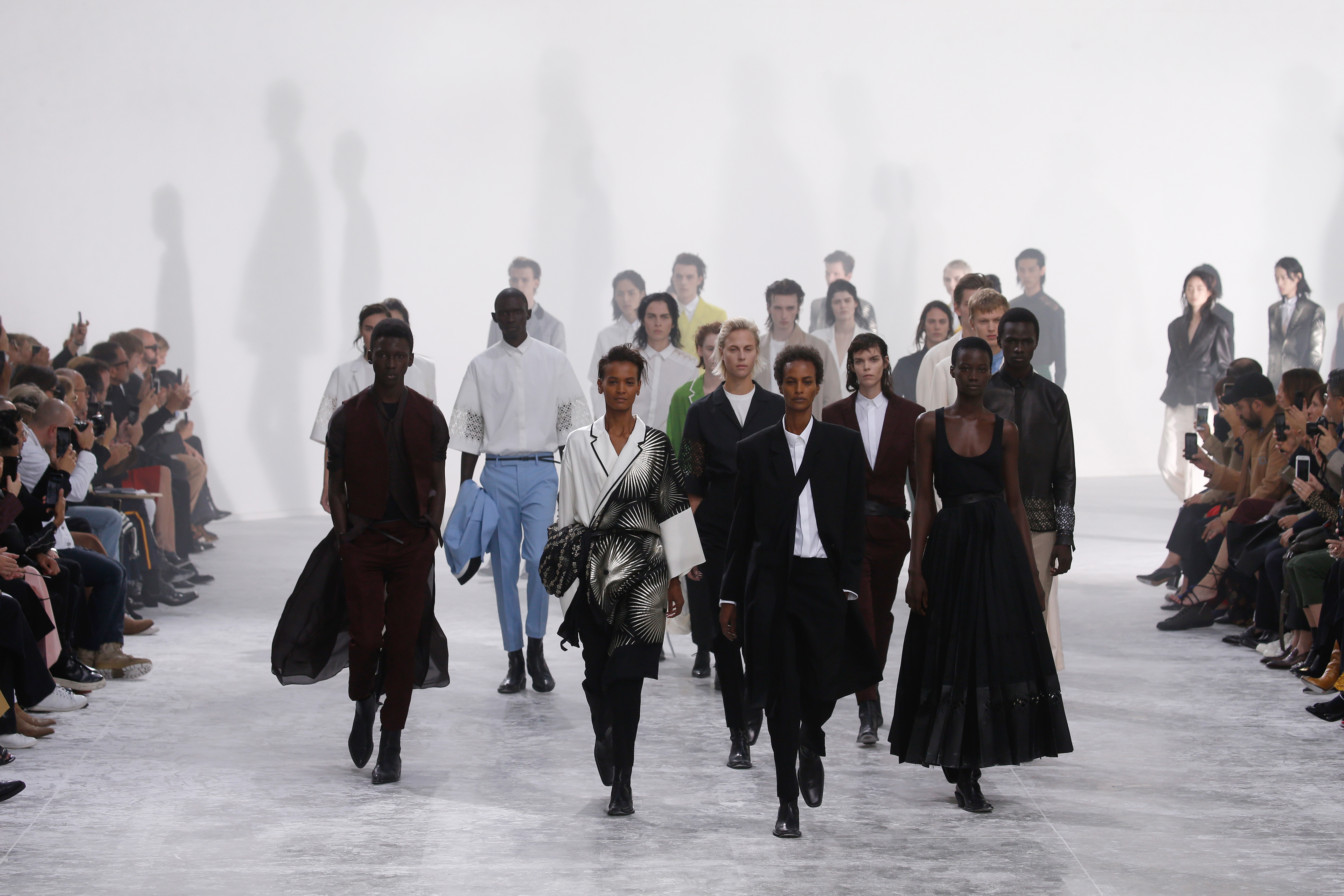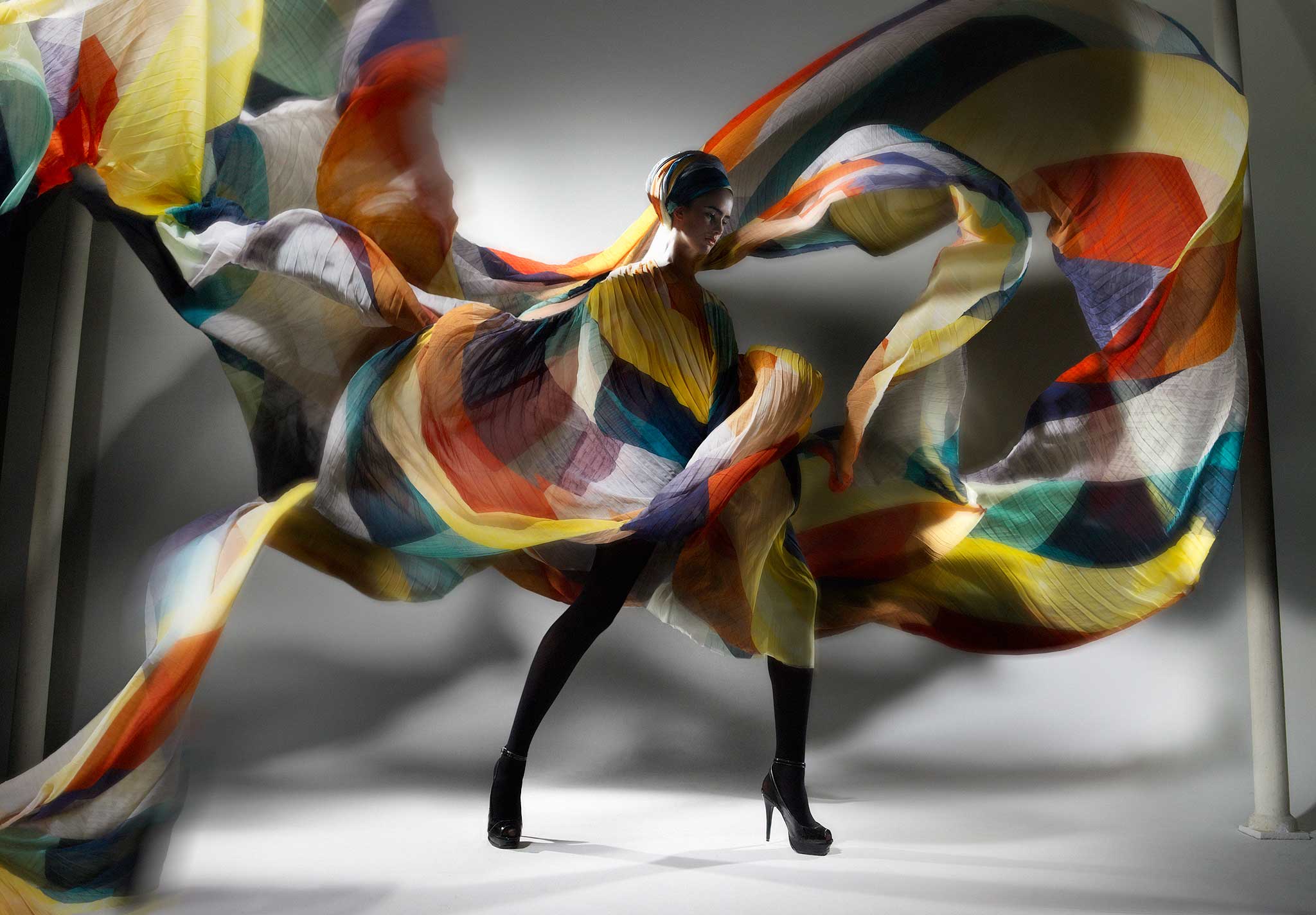13 November, 2018
Seasons are mixed up, shows have become marketing events, and everything has to become faster. In order to feel the pulse of fashion, our author went to Paris for Fashion Week.
The Berlin Fashion Week at the beginning of July was poor: the few shows were dominated by marketing, there was largely emptiness at the trade fairs, the Berlin Salon was much less frequented, and most Berlin designers refrained from presenting their collections. Time to see if the pulse of fashion is still beating in Paris. I found an ordinary sell-out – and the paradise.
By Joachim Schirrmacher
Paris parody
There has been talk of the end of fashion for some time now. It becomes obvious on the Rue du Faubourg Saint-Honoré. Fashion here is no longer part of our culture, but only a business, dominated by a few corporations. All the shops with their industrialized luxury seem interchangeable in this concentration and are remind of the shopping malls of international airports. Brand values are capitalized here, but no new values are created.
At the Paris conference of the newly founded Network for Fashion Research, “Culture(s) de Mode,” the journalists Laurence Benaïm (who did the first Celine interview with Hedi Slimane for Le Figaro, which attracted worldwide attention) and Sophie Abriat said, that Paris is an unbroken maelstrom, but at the same time an increasing fixation on clichéd images. For the fashion industry, the city has increasingly becoming a décor, they called it “Paris parody”.
Waldemar Kraus, fashion professor at the Berlin University of the Arts, also criticized consumption by exhibiting a coffin blanket with the Chanel logo in a funeral home. The project #restinpiece) was shown at Art Week in Berlin.
Beautiful Disneyland
At least the flair of the world capital of fashion is still there. Away from the main shopping streets, Paris continues to be as elegant as the fashion world likes: beautiful little shops with Artisanal chocolate or perfume, traditional bakers and bistros, markets with fish and vegetables – arranged like for a painting – and top hotels with a luxury unknown in Germany like the breath-taking flower arrangements in George V, all in front of the monochrome facades of the Haussmann era. “The magic of Paris makes everything look even more beautiful,” explains Fabienne Mauny, managing director of the perfume house Diptyque, the continuing enthusiasm.
For a long time, Paris was regarded as frozen, but in a globalized and thus uniformed world, where everything constantly is changing, it seems attractive again. But you feel like you’re in the department store Manufactum, which sums up its range with the slogan “The good things still exist”: in a beautiful Disneyland world.
Combined forces of fashion
Paris is increasingly positioning itself for international buyers and journalists. The last place where the forces of fashion come together?
At any rate, the official calendar convinces with the biggest names in fashion. Now that everyone is coming to Paris, it is becoming increasingly difficult for Germans to receive invitations to the shows, as the blogging model Marie von den Benken writes on Stern.de.
But there are still the numerous showrooms, also of German brands like Closed, Odeeh, Schumacher, Trippen or Wunderkind, as well as countless presentations and events like the worth seeing exhibition of the clothes of Azzedine Alaia and the fairs Tranoi (with 4 locations) and Premier Class. Everyone tries their luck here. But only a few of them have an international level.
A new youth culture
Nevertheless, everyone dreams of making a breakthrough with a big show, which are still the core of the fashion week. French designer Isabel Marant showed sparkling micro dresses instead of her easy-going boho chic – young streetwear with hippie influences. A look which was similar seen at Celine or Saint Laurent.
Fathers can finally forbid their daughters to leave the house like this again. Good news! After decades we have a real youth culture again for the first time, as the trend analyst for the German Fashion Institute Carl Tillessen stated. Young people look in the silhouettes of the late 80s and early 90s with grotesquely cut shoulders, voluminous club sleeves, moon-wash-jeans or oversized jeans jackets edgy – a 50-year-old old-fashioned. The world of fashion falls into two parts again.
Fortunately, Albert Kriemler was not irritated by this for Akris (he showed On sneakers for the first time). He presented dresses made of costly fabrics, in perfect fit and with seams like sculptures.
Fashion that give an authority that is immediately understood, even by people far beyond the fashion world, not only by Princess Charlene of Monaco, who also visited the presentation.
The show by Johnny Talbot and Adrian Runhof in the historic ballroom of the Westin Hotel was a meeting place for the Germans, who had also invited their best 100 end customers (and made them happy with a Goddiebag). Nobieh Talaei showed on Monday afternoon where we were already on our return flight.
Vivienne Westwood has now added her husband Andreas Kronthaler to her brand name, he has taken over the creative direction. So the look has become much younger. Skaters presented the collection in a garage, a production that would go very well with Berlin (but here one longs for false glamour, also the RAW area is our Louvre). Kronthaler showed more robes than traditional dresses, elaborate drapes and delicate colour and material combinations. The German designer Bernhard Willhelm surprisingly took over the styling. Known for his strong staging’s, he exaggerated once again that it was a pleasure: SM harness for the flower embroidered body, a Thonet chair as a headdress and a tray as a corsage, crooked wigs in orange, green and pink. The muscular Beauties with strong privates, who presented the underwear, were the most normal.
This created a power with which one could identify. Will the trio soon be responsible for the dresses of a revue in the Friedrichstadt Palast?
Before and after such presentations, there are is a second show with the visitors as models. Students from the Berlin Lette Fashion School also took advantage of this opportunity to take a look around, for example at Rick Owens, Comme de Garcon or Celine.
The power of fashion
Like Westwood, Haider Ackermann gave the public back their belief in the power of fashion. Ackermann is one of the most respected designers in Paris and was named by Karl Lagerfeld as his successor in 2010. He was also named for Dior and Maison Margiela.
He skillfully combines different worlds and thus enthusiasts with a modern and elegant alternative to the ubiquitous streetwear. The sharply cut blazers, flowing coats and shirts of the unisex collection were convincing with their feeling for materials and colours. The ethnic patterns had a modern effect thanks to the laser cut. The styling usually combines an elegant and a casual piece. The longer you look, the more beautiful it looks.
Even before the show one was stunned by the meditative atmosphere, left traces in the limed floor with his soles, strong spotlights cast huge shadows on the wall. Until the models strolled relaxed through the hall, first only to the clicks of the cameras, then to the rough voices of Haider’s Hero, Paolo Conte. A high mass of fashion that gave deep fulfilment.
Haider Ackermann shows what fashion ideally triggers: a beauty with which one can identify and reinvent oneself. Unfortunately, his clothes can hardly be found in stores, but in online shops. But you can also use his collection as a stimulus for your own styling.
Everyone believes that photos are more important than reality and that fashion can be placed directly in online shops from the computer. But the difference between a show and a photo is enormous: Often I think I attended a completely different event. While the video of Westwood’s show still reproduces it quite well, Ackermann has only one hunch: the mood of the visitors, the flowing robes, the colours and quality of the fabrics: all this does not show the images at all or only inadequately. For this reason alone, one will be travelling on to Paris for these shows.
Joachim Schirrmacher is a creative consultant and author based in Berlin. As pro bono Director of the Stiftung der Deutschen Bekleidungsindustrie (Germans Fashion Industry Foundation), he is responsible for the European Fashion Award FASH. The more than 100 award winners work at Adidas, Akris, Dorothee Schumacher, Haider Ackermann, Hennes & Mauritz, Hugo Boss, G-Star, Puma, Mango, Missoni, Maison Margiela, Officine Gènèrale, Vivienne Westwood, W.L. Gore & Associates, Wolfgang Joop or Zalando; some of them even in management positions.
Published
First published (slightly shortened): Der Tagesspiegel, October 6th, 2018, p. 25



